When I first moved to the Lower Mainland of British Colombia I wondered what Canadians did for a living; as a child brought up in Britain, I was led to believe that what they mostly did was chop down trees. I remember Monty Python singing a song about it: ‘lumberjacks’ apparently were O.K. — but as the verses progressed a different story emerged — all nonsense for comic effect, but even in the real world things aren’t always what they seem and mostly not quite so funny.
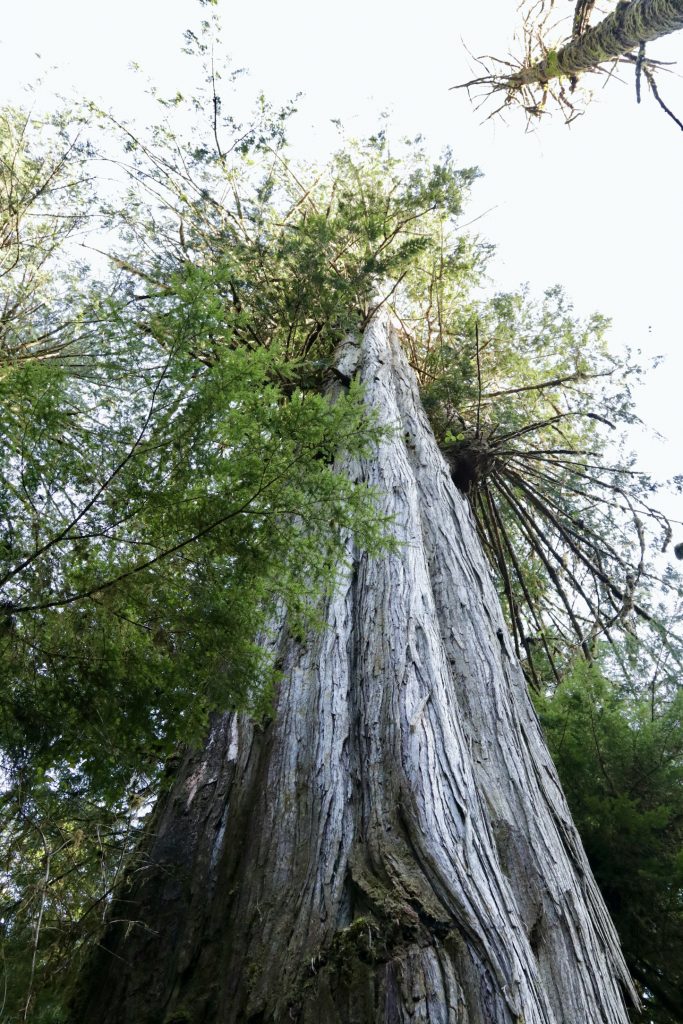
A couple of hundred years ago the coastal lowlands of British Columbia were covered in unspoiled temperate rainforest; but all of that was gone at least a couple of generations before I was born. I’m a Canadian now, but the tag is presumptuous: in my English imagination, men in red checked shirts still chop down trees somewhere close to home, although I’ve never seen them doing it… But of course, I should have twigged — there are no ‘grand old trees’ still standing in my neighbourhood, and in consequence lumberjacks in tartan shirts, looking to get things done, are few and far between… Come to think of it, I’ve never even seen a mounty ride by on a horse… When you start looking closely, life is full of little disappointments.
Once the trees were felled, people made a living farming the fertile land where the trees once stood, but even that wouldn’t last. These days, there isn’t very much money in farming, unless it comes as a subsidy for not bothering to grow anything. Profits are mostly tied to land values; and it’s no surprise that speculators are buying up blueberry fields, giving the impression they have suddenly become fruit growers, what they are really doing is submitting planning applications to re-zone agricultural land for residential use, and cash in on the current housing boom. There’s a lot of money involved, and a variety of ways to hit the jackpot.
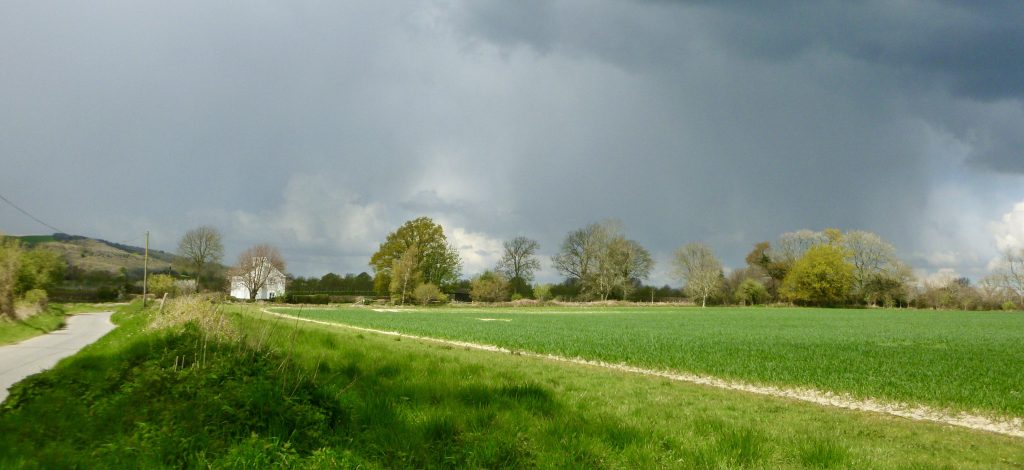
Having lived most of my life in England I am used to green belts that can’t so easily be re-zoned; which makes sense, because in future food will need to be grown closer to where it is consumed. Unfortunately, the chances of doing this where I live now are rapidly decreasing, as much of the arable land across the Lower Mainland has become urban sprawl, and I don’t think there are any plans to discontinue the policy.
The long term future of the area looks bleak, although there are many who don’t see it that way, as few are inclined to stifle an apparently successful economy, even when it’s built on the false premise that we can all live off the back of a housing boom. The Lower Mainland is expansive but continued development between the Pacific Ocean and the mountains is finite, and always at the expense of agriculture and the natural world.
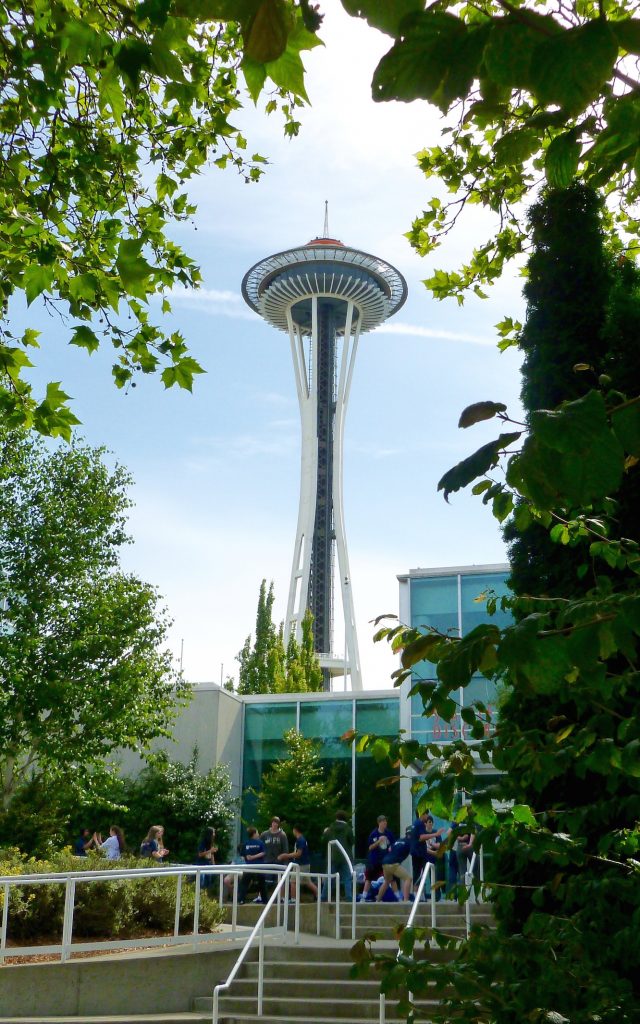
In the Pacific North West, Vancouver and Seattle are maritime cities that have evolved historically as ports exporting locally felled timber. But with the old growth forests long gone, both have taken on new roles that include thriving film industries and tourism. Vancouver is especially well placed as it is possible to be on a beach in the morning, then lunch in the city and get over to the North Shore mountains for an afternoon ski, or a walk on the wild side, depending on the season.
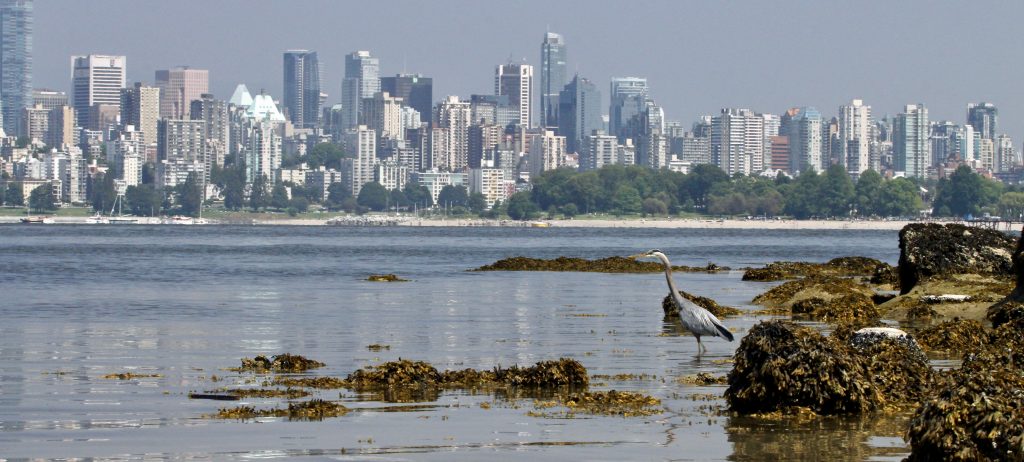
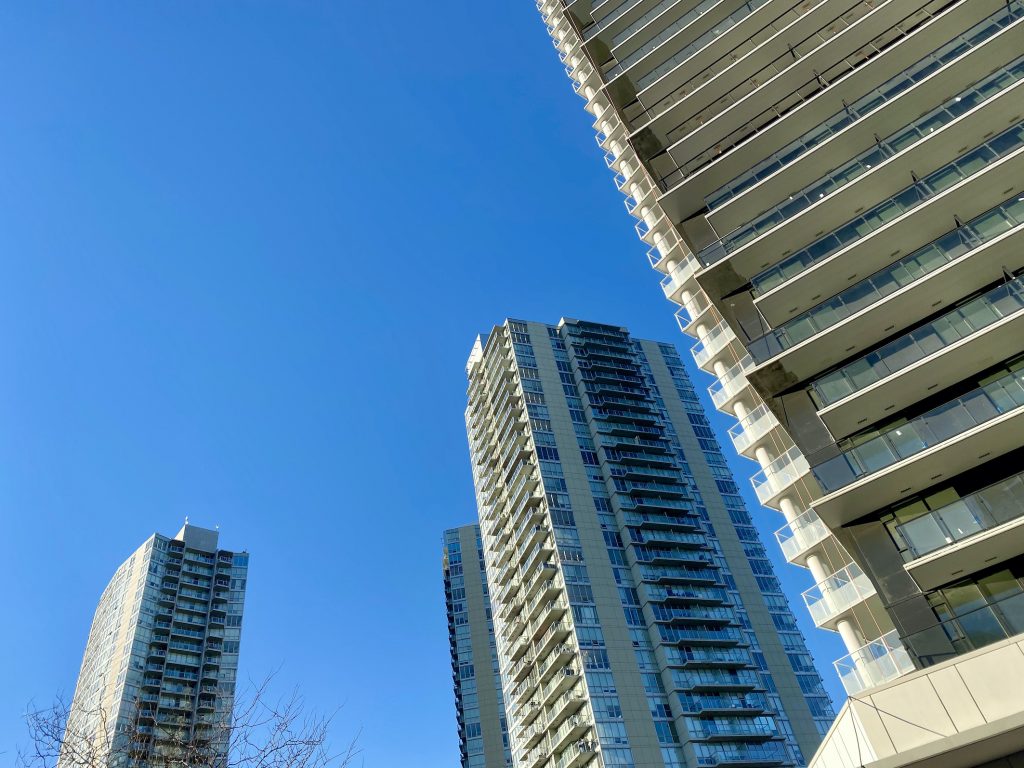
I live on the Canadian side of the border between the two impressive cities, and every day the natural world moves a little further away. My nearest city is Surrey which hasn’t a lot going for it — landlocked, and developing rapidly, it remains uninspiring.
The land that surrounds the city has been utilised principally for the purpose of building houses, fuelled by a never ending influx of people from elsewhere (myself included): there is a plan to have more people living in the area than live in Vancouver within 10 years. One might think the urban sprawl is driven by quick money rather than any sustainable plan for a long term future. Presently, little is produced other than housing, which has resulted in a service industry — but what will happen when the available land runs out? Not everybody will be able to make a living working in a shop or driving a taxi.
In only one respect does the city follow in the footsteps of Vancouver — increasingly, as more people flood in, local people are priced out of the housing market; or at least have to live in far less space. When more people are crammed in, there is inevitably less natural space, which is detrimental to health, but probably still good for council coffers. I remember a time when people lived in places they actually liked, but now the priority is to simply find affordable accommodation… and if you don’t like high density living, then that’s just too bad — your loss will always be somebody else’s gain.
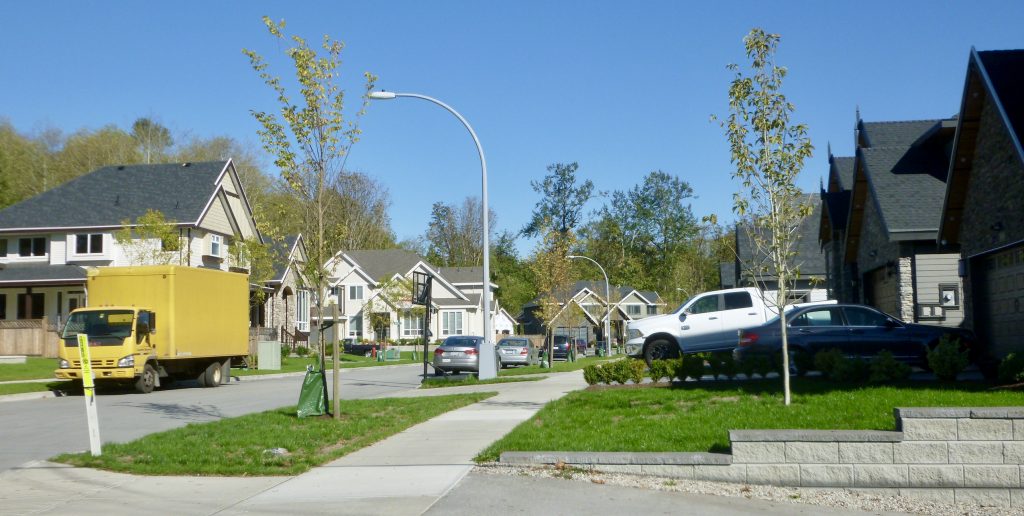
Early in 2020, experts predicted that house prices in Canada would drop as a result of the Covid-19 pandemic, but this turned out to be about as reliable as the predictions that our computers would crash when 1999 turned to 2000; and more recently there were those who told us that Donald Trump was unelectable; then came Brexit with warnings of dire consequences if Britain left the European Union — and we’re still waiting on that one. Not surprisingly, in April 2021, when it was predicted that Canadians house prices would fall dramatically, they did exactly the opposite and rose at the fastest rate on record. Unfortunately, we don’t remember those who gave us all the duff information, if we did we’d never listen to them again… Instead we just keep getting fooled… In the worlds of Homer Simpson… ‘Dooh!
Predicting the future is never easy, but there’s little need for pundits to get mouthy about what my local city does best — it orchestrates the urban sprawl that surrounds it; and with more vehicles come traffic jams and a decline in air quality, while infrastructure barely keeps pace with the rapidly increasing population: predictions are unnecessary because ‘progress’ (if you can call it that), is moving at break-neck speed.
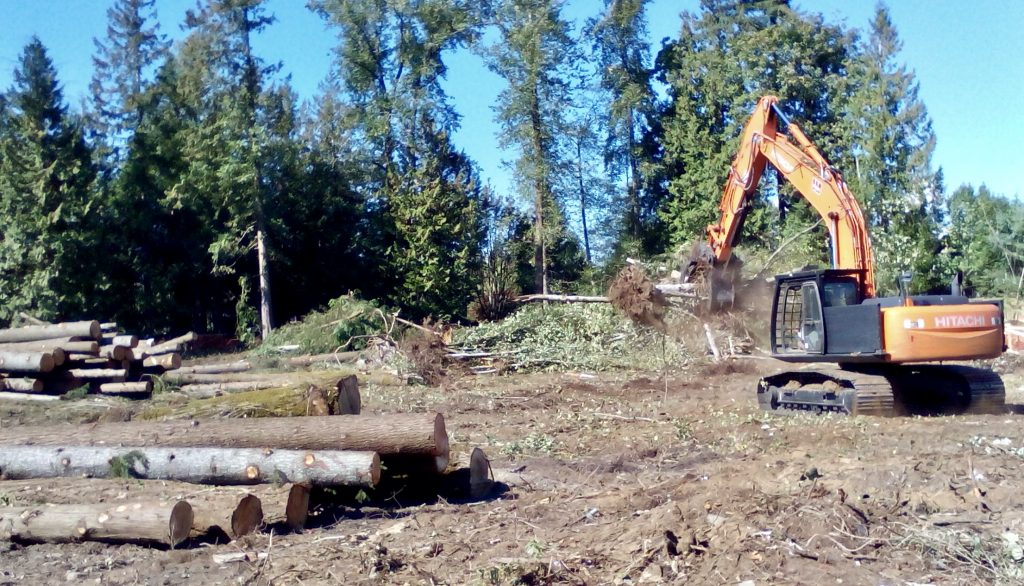
A few designated areas provide wildlife respite, but most are quite small and do little more than service the burgeoning dog population’s pooing requirements. There are only a few links between ‘natural’ spaces; but in my area this means little more than weaving between dog doos under a buzz of electric pylons — pointless really, because the nature route is low priority and incomplete. All of this is unfortunate, but for reasons that are puzzling, Canadians are reticent to complain as things around them get steadily worse.
Despite the dismal outlook, there is something to be grateful for: despite the extensive and rapid development across the Lower Mainland, local coastlines provide important habitats for large numbers of migrating birds, with many remaining quite natural along route. Move away from the city towards the mountains or the sea, and the human population often drops away, especially in low lying coastal areas where the possibility of rising sea levels dissuades many from attempting to live there.
Wherever the land touches the sea, the tidal zone offers one of the most difficult and expensive areas for humans to conquer, with the result that long strips of mostly undisturbed natural habit are still intact. We don’t always appreciate the large numbers of plants and small invertebrates that live in such places, but the waders, ducks and geese that come flying in to feed on them certainly do.

On the Lower Mainland as winter approaches, it is difficult not to notice the steadily increasing numbers of migrating ducks and geese flying in, but their arrival is not considered consequential: the local economy will always take precedence with the birds considered only for their amenity value. Unfortunately, as our economies become more globalised the natural world hardly features at all.
Getting the best of nature has become second nature to us. When a site is designated for a new airport in places where birds have been flying along migratory routes for thousand of years, the natural aviators become a sudden inconvenience and efforts are made to ground them. In dealing with the natural world, our hypocrisy can be breath-taking, especially when there’s a dollars to be made.

At some stage, we will be forced to re-evaluate our absurdly homocentric views towards every natural environment we come into contact with: presently we consider such places as just waiting for us to repurpose them. We start by asking what benefits conserving them will have for us, and if there is uncertainty, fall back on that old favourite: ‘You can’t get in the way of progress’. So locked are we into following the money, that on coming up against wilderness, habitually, our first impulse is to destroy it — the natural world gets a reprieve only when we can find no immediate economic reason to exploit it.
Fortunately, large numbers of birds continue to migrate through many of our coastal regions. In the Northern Hemisphere the birds usually travel along migratory routes that run from north to south in the fall, and in the opposite direction during the spring; the resultant spectacle is one of the great natural wonders of the world. I consider myself lucky to live close to a major migratory route — ‘The Pacific Flyway’ involving a great many species and an enormous number of birds: everything from hummingbirds to songbirds and waders, are making their journeys, but it is the swans, ducks and geese as they skein above us in orderly patterns that we are most likely to hear, see and notice.
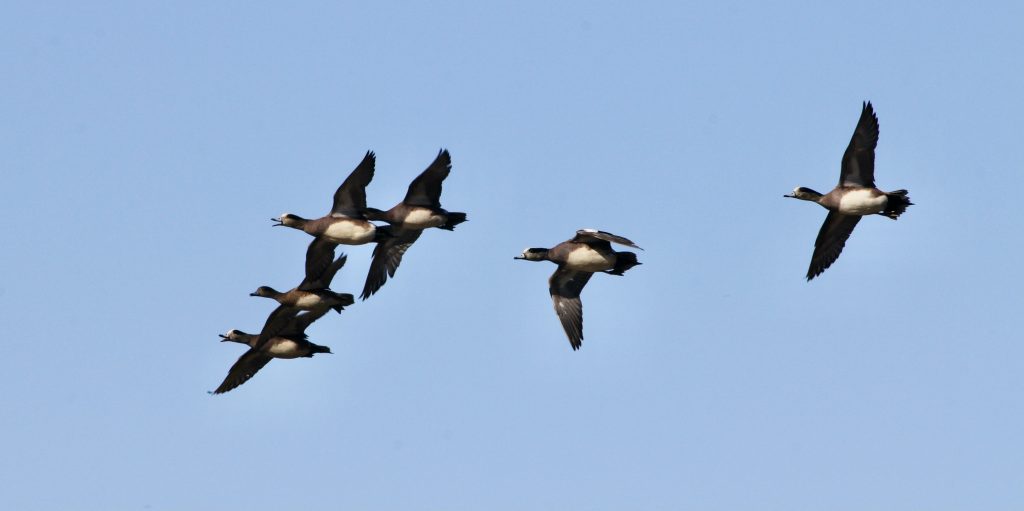
At the approach of winter many birds are looking to move away from the harsh weather conditions they are experiencing to the north. The solution is obvious: fly south to where things are easier and return to traditional breeding grounds as spring arrives. Many birds will come all the way from the Arctic but not all will move on to warmer climes; indeed, some will not go much further south than the Lower Mainland where temperate coastal conditions provide a manageable climate for overwintering. It is essential to protect the traditional feeding grounds annually visited by birds arriving in the fall — because if these are lost, the repercussions for the natural world, inevitably, will extend far beyond local areas.
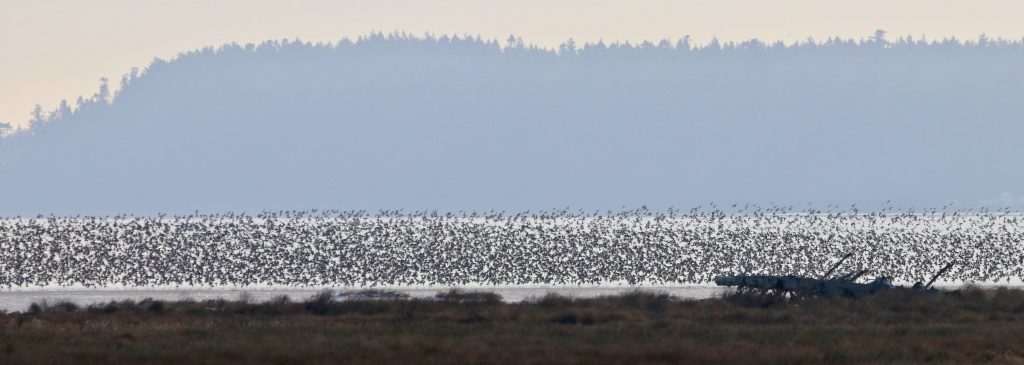
The coastal regions of the Pacific North West have extensive inlets and large numbers of islands providing almost endless opportunities for migrating birds to feed. However, not every species can exist exclusively in the tidal zone: many wildfowl also require grasslands for their survival, and if extensive reserves are not available then winter farmland lying fallow remains their only alternative.
In years when winter birds show up in numbers, food supplies can sometimes become limited by extensive grazing and this can prove destructive to agriculture; although on the upside, bird droppings usually increases soil fertility. When bird numbers stay within certain limits, the relationship between migrating birds and local farmers can be a good one, especially if farmers are compensated adequately for the losses caused by visiting grazers. In fairness to the birds, it should be remembered that their ancestors were utilising local habitats long before these were repurposed for agriculture; an argument that hasn’t worked well for native people in the past, and is unlikely to prove more successful in the conservation of native birds.
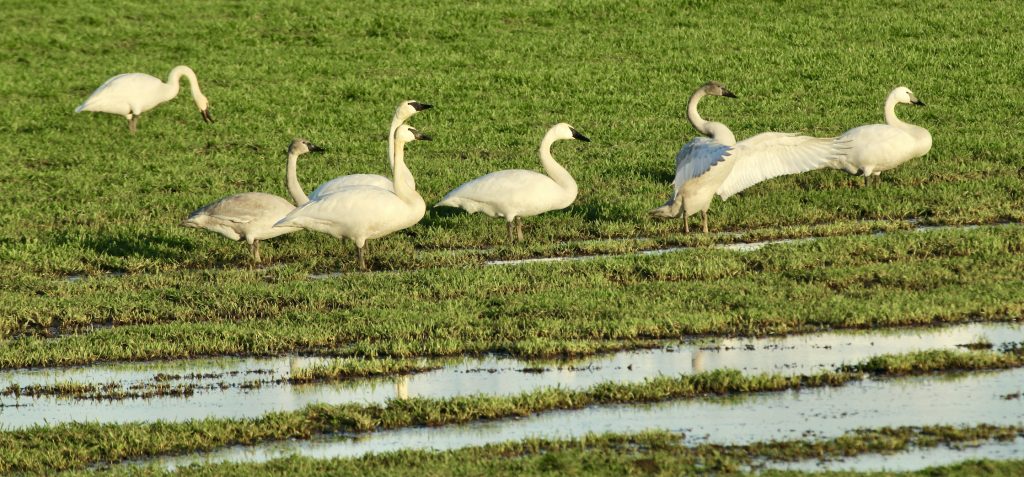
Because I lived much of my life outside British Columbia, the birds I didn’t get to see in the wild before coming to live in Western Canada hold a certain novelty value, with snow geese amongst my favourites.
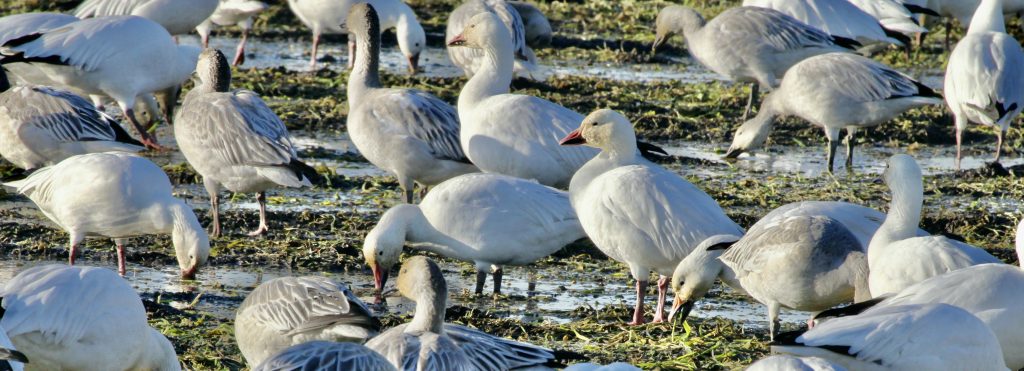
Migrating in from Arctic regions, the snow goose journey is epic in nature: most of the birds that overwinter on the Lower Mainland migrate from summer breeding grounds as far away as Wrangel Island, Siberia. They fly across The Bering Sea and North Pacific before moving down the west coast of North America. Many bird species will continue further south on their extraordinary journeys, but the snow geese arriving during November will stay for a while, then move a little further south to graze on grasslands in Washington State before flying North again as spring approaches.
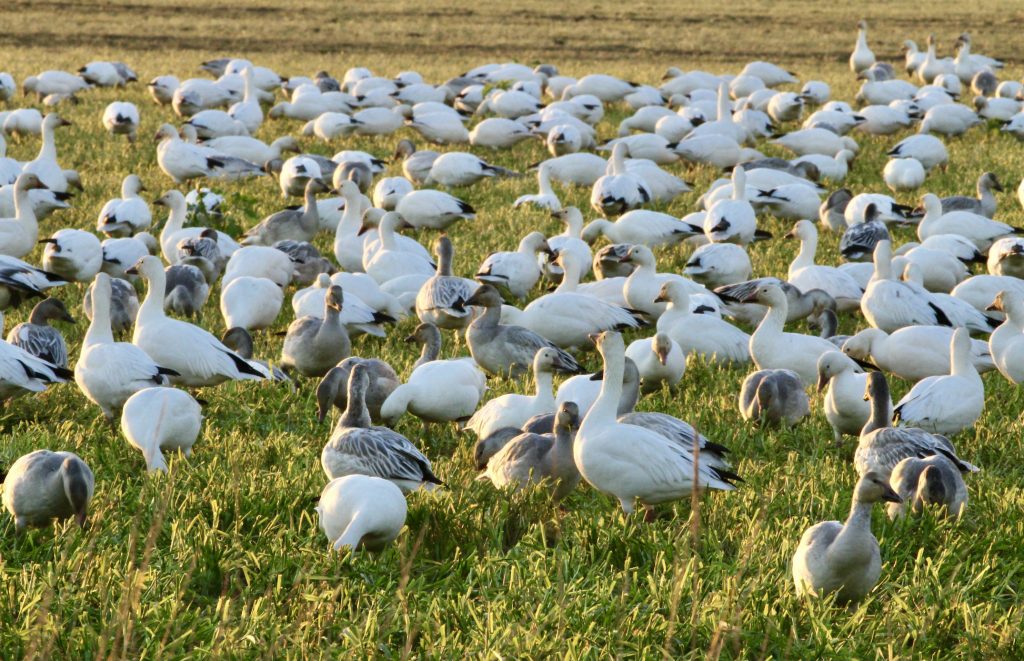
Snow geese provide the best opportunities for photography when they are feeding; and are most easily approached along footpaths where people regularly walk fence lines. Providing nobody attempts to enter the field the birds remain calm unless they have been recently shot at. It is however natural for the birds to move away from you as they graze but if too many heads are raised and stay up, and the geese get agitated and noisy, as with the Trumpeter swans mentioned earlier, it is best to move away before the birds take flight.
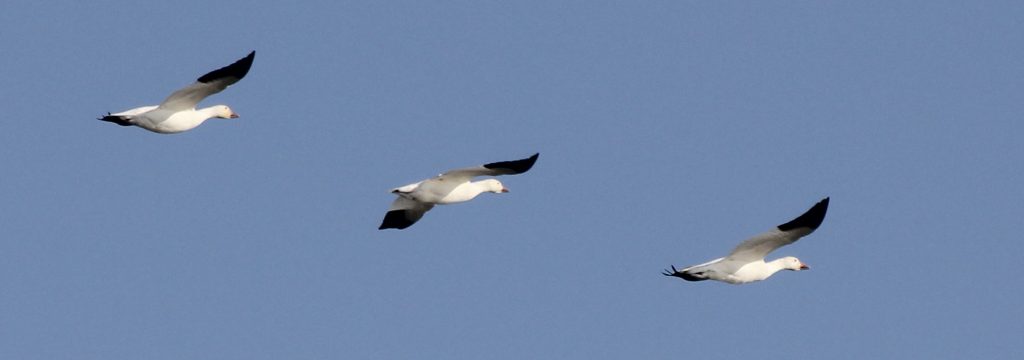
There is no excuse for disturbing wild birds even when there are so many it doesn’t seem to matter. Sometimes wild geese will feed on local parks and golf courses; and just because we might walk in these places, there’s no reason to put them up for fun, or for a picture. Birds that are forced to keep moving on deplete their energy reserves rapidly, and this may prove consequential on colder nights. The fewer unnecessary flights they have to make the easier life becomes. Developing a sensitivity to wildlife should be encouraged, although such behaviour doesn’t come naturally to everybody. It’s never too late to learn though — and if it costs us nothing, why not behave appropriately? When I was young I’d have been in trouble for chasing the ducks, but many people think it cute when their child or dog chases a wild animal; and perhaps therein lies the problem to ‘wild goose chasing’… and quite a lot else.
In a world where positive stories about wildlife are increasingly difficult to find, snow geese are running against the trend, with their numbers increasing dramatically in recent years, in part because over the last half century, more arable land has become available across their winter feeding grounds — the general view is that there are now too many birds to support. In Arctic regions, summer temperatures are increasing and as so many young birds are being reared successfully, grasslands across Arctic feeding grounds are also becoming overgrazed and this is now a major concern. In consequence, there has been a relaxation of the number of birds that may be shot annually to allow habitats to recover.

The only shooting I’ll ever do is with a camera, but appreciate the potential for a snow goose problem. Nevertheless I remain an admirer of any bird that can fly at high altitude over great distances to achieve hard won success. A snow goose may live for 16 years and if you can imagine following the progress of a single bird over the course of a lifetime, you’d likely feel upset if your bird ‘got the bullet’. It is however necessary to maintain a realistic attitude as to how nature is balanced: predation and culls seem shocking, but they are often better options than birds eating themselves out of their available food source, with disease and loss of condition inevitably causing birds to suffer as they starve to death.
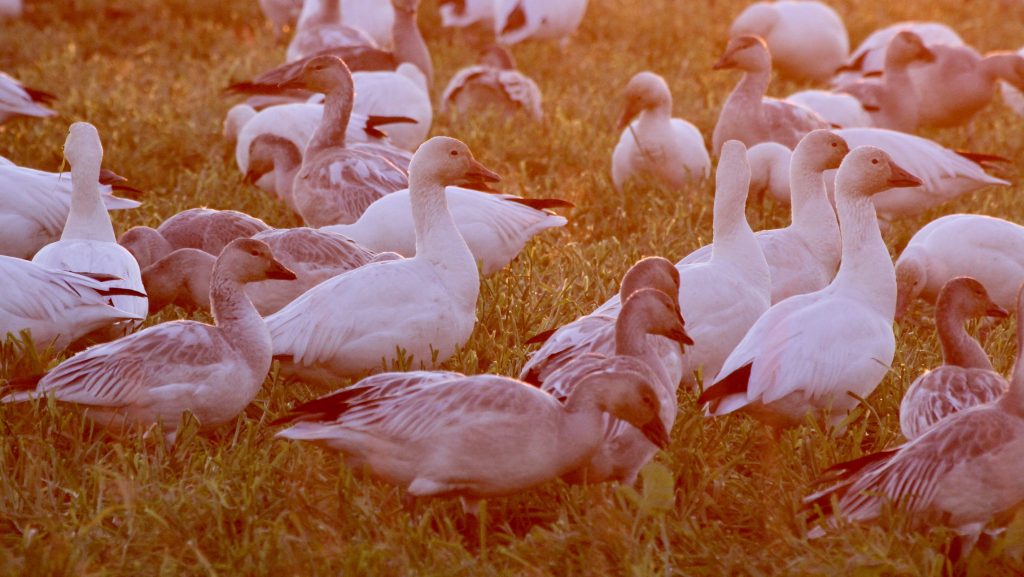
The migratory cycle appears to be a successful and never ending process, but as migrating birds rely on so many habitats during their passage, they could easily disappear as quickly as the native forests of the Lower Mainland already have. For millennia birds have utilised large numbers of individual feeding grounds as they make these journeys, and if our actions destroysjust a few essential places, the viability of many bird species could be thrown into question. There are no mystical guiding forces; the longterm future of the natural world is entirely at our disposal — disposal being the operative word.
We can open small nature reserves as easily as we create zoos in an attempt to maintain species, but in the longterm it is the conservation of natural ecosystems that is most important; and in future we will need to develop more effective ways to live alongside nature. Extending our reach to every region of the globe to support ever expanding economies is unsustainable; ecosystems are finite and complex beyond our wildest imaginations and once gone cannot be recreated. There can be no doubt that presently, we are disrupting many natural environments beyond repair.

Birds are part of the many complex ecological systems that surround us, and are not simply flying around for our amusement — but if we can’t get past that notion, it is as well to consider that migratory routes are defined entirely by the ecosystems they pass through, their success or failure an indicator as to how sustainable and healthy is our world — and if we choose to disrupt them… we do so at our peril.
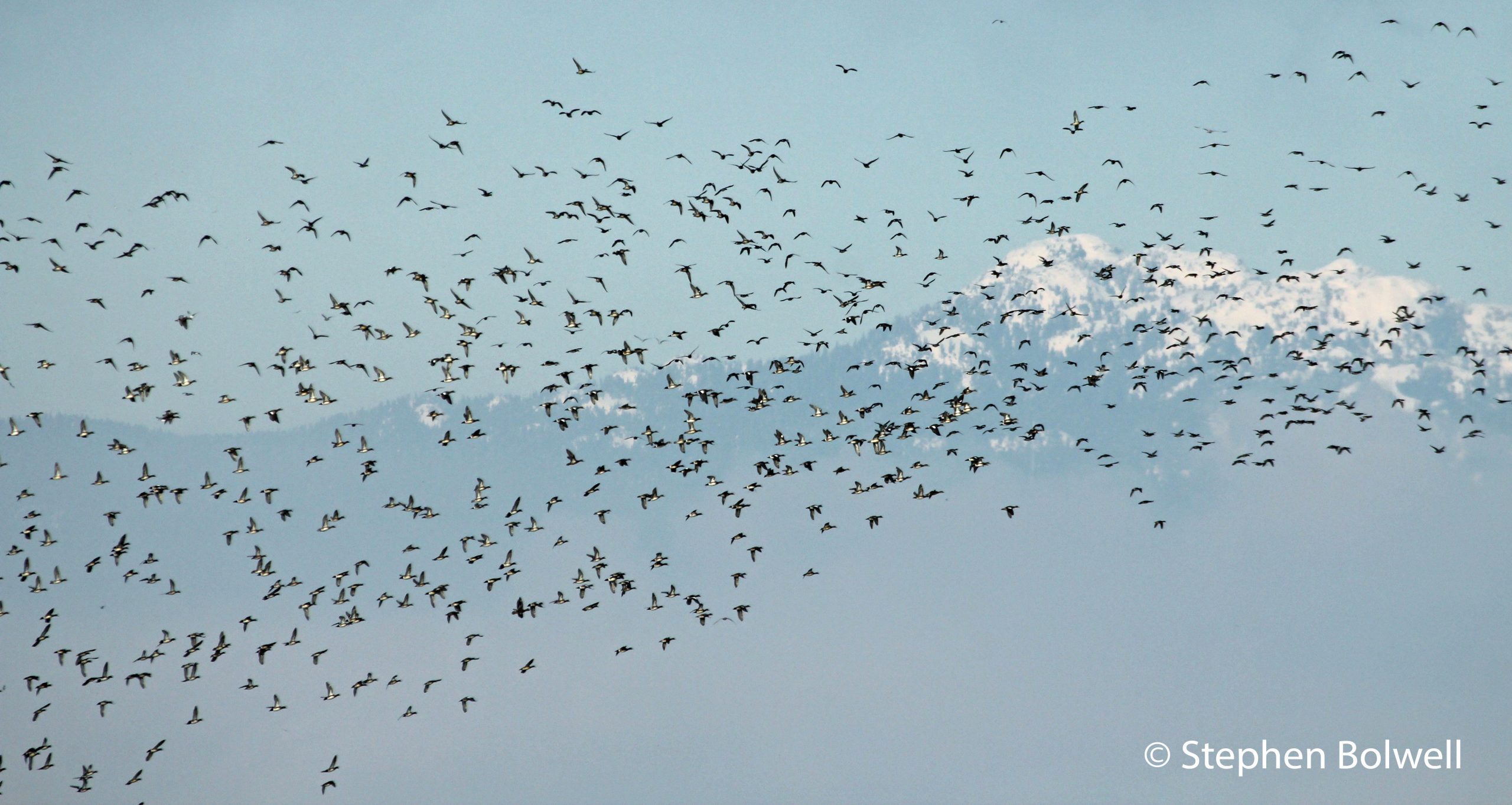
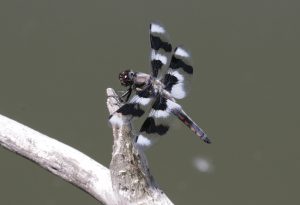
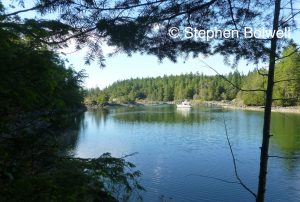
Thank you once again for sharing your thoughts. Quite the read. Much to ponder and share with others.
Thanks John. It took a while to write; there was a lot to consider. For sometime I have been unsure that just looking for the positives is the best way to engage with people as this approach hasn’t had much impact on serious environmental issues; there is also a lot that people remain unaware of, and if they are not told, they will continue to think everything is fine. I genuinely appreciate the migratory success of birds in the region, it is a positive … There are always upsides — consider the felling of trees — doing so is not always a disaster, because opening up some areas creates more varied habitats and this increases natural diversity, but to cut all of the trees is madness; and when almost everything goes to urban sprawl, it is difficult to argue any positives for the natural world, future food protection, and the long term health of people living in the area. The Lower Mainland has a very specific environmental profile, which doesn’t extend much further north — you can see this in plant, insect and bird distributions, but this is getting more difficult to notice because so few natural areas have been left intact, and the rate of habitat loss has been startlingly rapid.
I am glad to have found your blog Stephen looks interesting nice pictures and a great writing style. Cheers
Thank you Melissa. I try to keep things as science based as possible, but also give a point of view; nothing is pinched from somewhere else. It is kind of you to take the time to comment.